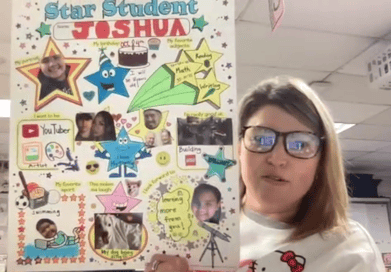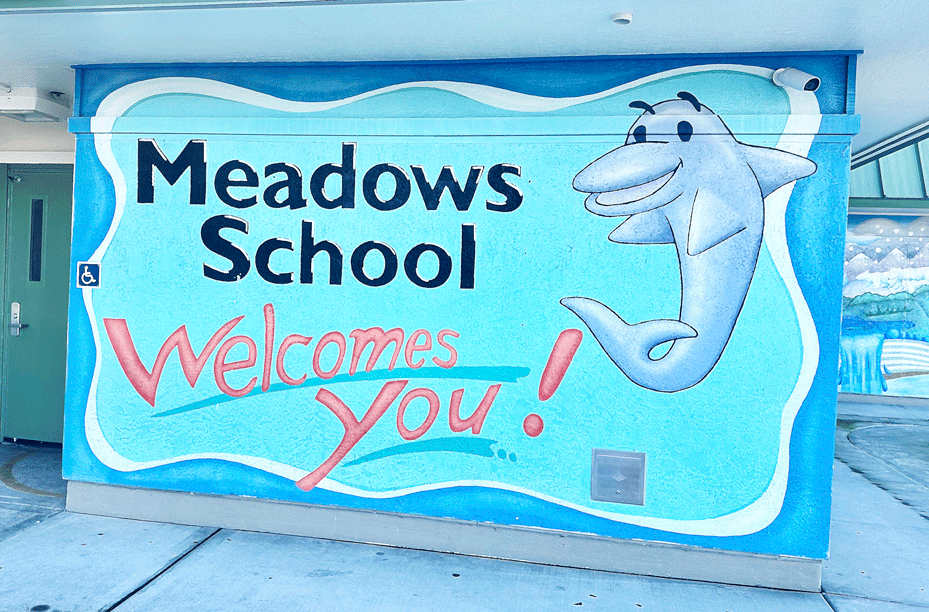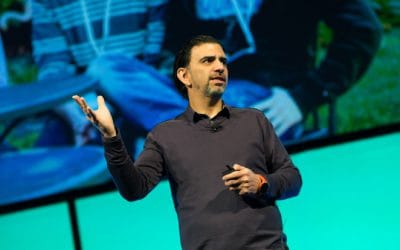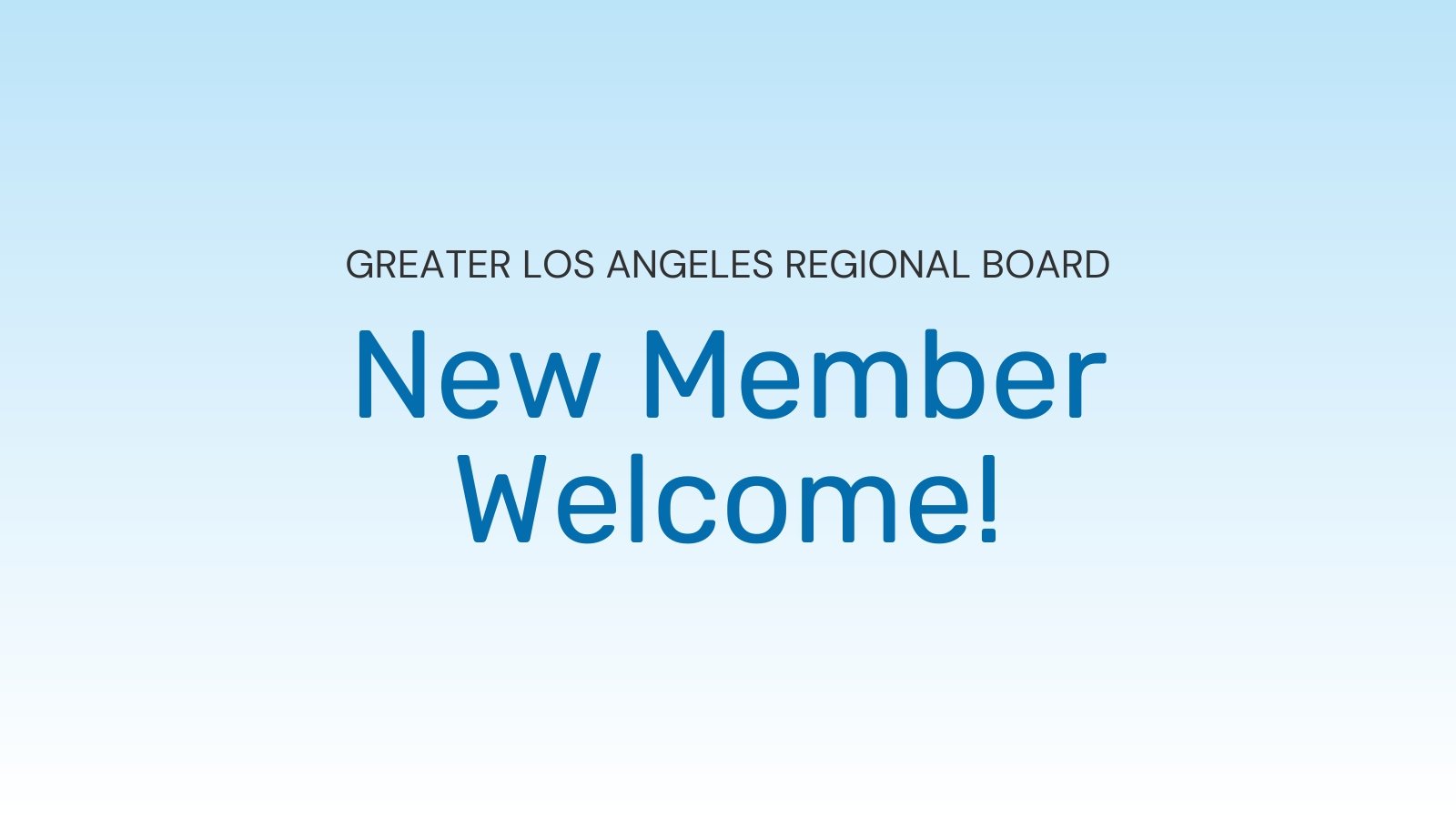Powerful Practice: A Q&A with Coach Brandon Schuler
Meet PowerMyLearning's Brandon Schuler! A former educator and lifelong learner, Brandon brings a wealth of experience to his role as a Professional Learning Specialist and coach, working alongside educators nationwide .
Most recently, Brandon has been working with Jeanne R. Meadows Elementary ("Meadows"), a Title I elementary school in San Jose, CA, to help educators integrate culturally responsive education best practices into their instruction. A longtime partner of PowerMyLearning, Meadows serves TK-6th grade students and is a part of the Franklin-Mckinley School District.
Culturally responsive education is a teaching approach that recognizes and respects the diverse cultural backgrounds of students, creating equal opportunities for all learners. PowerMyLearning partnered with Meadows to enhance teacher skills, leverage family strengths, and provide students with effective, restorative, and rigorous instruction.
We asked Brandon to share his insight into what a culturally responsive approach looks like for students, teachers, and families and the extraordinary impact it has had.
What does it look like to take the ideas behind culturally responsive education and help teachers bring them to life in the classroom?
One of the great things about this work is that we take major pieces of culturally responsive education—mitigating implicit bias, building trust, equity, rigor—and make them bite-sized. We zoom into these areas and help our teachers identify and practice specific strategies depending on their students’ needs.
Before I head into a session with teachers, I spend time with the content, reacquaint myself with the research and concepts, prepare a few anecdotes from my own teaching experience, and think about how our tools might be used across all grade levels and for various purposes.
From there, it’s about meeting teachers where they are and asking questions to spur further thought. It’s during these conversations that the strategies and practices begin to take life.
After, teachers have independent time to think, plan, and ask questions, and then we have collaborative time to work through any potential obstacles or barriers (pedagogical or logistical). I make myself available for additional support along the way as teachers begin implementing with their students before sharing their results at our next meeting.
One example of what this looks like is second-grade students created "Star Student" posters in class and at home with families. Their work was displayed around the classroom and each student got the opportunity to become the Star Student, celebrating who they are and spotlighting what makes them special. This project led to meaningful conversations about how important it is to celebrate our unique selves and our differences.

Student sample: second-grade student Joshua describes his interests, favorite things, and aspirations during his time as Star Student.
What pre-conditions were necessary to begin this work around CRE?
There are a few factors that have played into how successful this program has been.
- Support from Leadership: First, Magdalena Moore, the principal at Meadows, has been a supportive force. She recognizes how important it is to do this work and she consistently communicates that to the teachers she works with. She also participates in the work herself, serving as a powerful model for the Meadows community.
- Open-Minded Educators: Second, whether it was due to their own interest and professional training or if it was through Magdalena’s leadership, the teachers at Meadows were already working toward being more culturally responsive educators. They are familiar with many of the concepts that we introduce and may have even taken steps toward implementing these practices in their classroom. Since it’s not the first time they’ve heard these concepts or have been asked to implement culturally responsive practices in their classroom, they were more receptive to taking that work on again with us there to support.
- Strong Foundation of Trust: Last, I’d be remiss if I didn’t mention that PowerMyLearning is building upon a long-standing partnership with Meadows. My teammate Kendra Frank, who worked with them up until this year, laid an incredibly strong foundation of trust with school leaders and staff. So when I stepped in as the implementer, they were immediately willing to work with me and dive into the work.
What is one moment that stood out to you from your conversations with teachers?
My favorite moments consistently come from the end of each coaching cycle. In our third session, teachers reflect on their most recent implementation and share artifacts with me and a few other teachers in the school. In these moments, I get to learn more about where they and their students were able to thrive, where they may have struggled, and how we can work together to improve this practice in the future.
One standout moment for me came during our Build Trust With Students and Families series. A third-grade teacher used a version of our pre-conference student and family reflection resource. She was able to motivate each of her students to talk about their progress in the school year so far and their goals moving forward. Then, she shared reflection sheets with students' families during conferences and asked for their input as well–how they felt, their goals for their child. It was great to see this teacher connecting with her students and their families in a way that really showed how much she cared about the relationships she was building with them.
What’s one project/strategy a teacher implemented that worked really well in the primary grades? In the upper elementary grades? What outcomes did you see?
Interestingly, I had two third-grade teachers and one sixth-grade teacher work on the same project separately from each other. They were inspired by the book "The Best Part of Me: Children Talk About their Bodies in Pictures and Words."
For this project, students were tasked with choosing their favorite body part and writing a paragraph about why it was their favorite. Families of third-grade students were also asked to choose a body part for their child and write their own short paragraph.
The results were incredible. Across the board, students were engaged and the family insights were emotional and filled with care. Students also really enjoyed having so much agency throughout and being able to shine and be celebrated for who they are. In both grades, the projects were displayed for others to see, and it ended up being this amazing celebration of the students from each class.
-1.png?width=416&height=278&name=Kati_Sample(1)-1.png)
Student sample: "My eyes help me see. They help me see the good and the bad in people and things. I love my eyes. The brown color reminds me of the first. My eyes help me to smile with my mask on. I can smile with my eyes to make people's day. My eyes help me to see the people and things around me. Help me to see who the people are and what they are going to be."
What would a teacher trying to implement this in their own classroom need to know?
While this project addresses academic standards and skills, I think the biggest thing to remember is that it ultimately creates an opportunity for our students to celebrate a piece of who they are with their teachers, classmates, and families. And while it’s meant to evoke that celebratory feeling, this type of reflection can be vulnerable for students.
Teachers should be prepared to have conversations with their students where they encourage and help them identify pieces of who they are that make them special.
I would also add that this project can be adapted for classrooms with differing levels of access to technology. For example, if teachers are worried about taking or printing pictures, they could ask their students to draw pictures instead. Completing the project this way still gives students the opportunity to make specific choices about their drawing which could lead to some insightful conversations about identity and self-perception.
__
In summary, it is important to recognize and respect the diverse backgrounds of students through culturally responsive education practices. We are thrilled to have the opportunity to further this work with Meadows.


.jpg)
